Aconite planting and care in the open field
The tall perennial aconite gained its popularity thanks to the unusual shape of the inflorescences, very similar to the helmet from the armor of a brave knight. This luxurious flower from the buttercup family is grown not only as a garden decoration, but also as a medicinal plant. The wrestler, as he is also called, is most widespread in North America, Asia, Europe.
In the wild, it settles in humid places along the river banks, on soils well-flavored with humus, in mountain meadows. To grow aconite on your personal plot, you need to familiarize yourself in more detail with all the intricacies of its planting and care in the open field.
Site selection and soil preparation
Despite the fact that this decorative flower is not picky about growing conditions, it is best to plant it in shaded areas. Placing curly aconite in an open, sunny area can cause burns on the leaves and slow growth. In addition, flowering will noticeably deteriorate, the inflorescences will be lethargic.
Also, do not choose areas where water is retained. With excessive humidity, there is a high probability of rotting of the root system. Perennial grows poorly on stony and sandy soils; it is recommended to choose areas with loose and light soil for it. Before planting aconite, the site must be dug up and peat, compost or any other organic fertilizer must be added. The soil for aconite must be fertile.
For information
If the flower garden has heavy clay soil, then add sand, this will make the soil looser.
As it grows, it is recommended to periodically add soil around the flower. Combining this procedure with mulching will reduce labor costs and save time. It is good to use steamed sawdust, freshly cut grass, straw, peat as mulch for aconite.
This technique allows you to simultaneously introduce micronutrients into the soil and improve its top layer, prevents the growth of weeds and prevents a crust from forming on the surface of the earth after precipitation. The optimum thickness of the mulch layer is from 5 cm.
If the garden plot is located in a wetland, then drainage will have to be arranged for the flower garden. To do this, it is necessary to make a hill from bulk soil and a hydrogel, which will absorb excess moisture during prolonged rains. It is noteworthy that the hydrogel during the dry period is able to gradually release liquid into the soil and keep the plant roots from drying out.
Landing technology
Aconite perfectly reproduces by seeds, cuttings, and dividing the bush. Depending on which method you choose, the time and method of planting will be slightly different.
When to plant
Sowing aconite seeds in open ground is better in the fall. Seedlings will appear by next spring, and they will begin to bloom in the second or third year.
Freshly harvested seeds have a high degree of germination. Before planting, they need to be soaked (for example, wrapped in a wet cloth) and germinated. If a flower garden is planned for the spring, the material must be saved. To do this, it should be distributed in containers where wet sand is located, and kept in frost. And in the spring, germinate and plant in open ground.
For seedlings, the planting material is first stored at room temperature for 30 days, and then transferred to the refrigerator and kept at a temperature of 2 degrees for 90 days. After that, the seeds must be removed and germinated. The hatched seeds are planted in containers filled with soil.After the appearance of two leaves, the seedlings should be dived. The grown bushes are moved to the garden in the fall.
It is possible to plant by cuttings or divide a bush for propagation both in spring and autumn. But to settle with daughter tubers - only in the fall.
Transfer
Open ground movement process:
- Dig a planting hole slightly larger than the rhizomes.
- Lay a drainage made of expanded clay or large pebbles on the bottom, add a little nutrient mixture. The best fertilizer for aconite is the mineral composition, which must be used in accordance with the instructions in the instructions. Large doses of top dressing can harm young plants.
- Place the bush in a planting hole and sprinkle with a layer of fertile soil. The main thing is that the root collar is a couple of centimeters higher from the surface of the earth.
- Tamp down the ground carefully.
- Water the seedling liberally.
- Mulch the plantings so that moisture does not evaporate and heat does not escape.
For information
The recommended distance between plants is 25 to 70 cm.
Perennial care
In order for a flower garden to decorate the garden and delight the eye with its magnificently blooming arrows, it is necessary to maintain comfortable conditions for its growth and development. Given the tallness of aconite, it is recommended to regularly introduce nutrients in order to make up for their deficiency in the soil. Compost will be a good fertilizer, which will not only feed giant bushes, but also make it easier to care for the flower bed.
During the budding period, mineral or organic fertilizing should be applied under the bushes, and the abundant flowering of aconite will be guaranteed.
In the dry hot season, do not forget about watering the plants, otherwise the inflorescences will be small and ugly. It is imperative to remove weeds and loosen the soil around the bushes, providing air access to the roots. Even these minimal efforts will be able to provide the plants with normal growing conditions, and aconite will certainly thank the gardener with incredibly beautiful flowering.
Advice! If you have applied a layer of mulch, weeding and loosening will not be necessary.
So that the aconite bush does not lose its strength, it is necessary to remove fading inflorescences in a timely manner. Only then will the bush decorate the flower garden until the very cold. It is also recommended to dig out extra shoots every four years in order to prevent the growth of aconite.
In autumn, the root system of the bush must be protected from the negative effects of negative temperatures. The procedure consists in trimming the stems and covering the rhizomes with a layer of sawdust and peat. Layer thickness - 20 cm.
Since aconite is a poisonous herb, it is necessary to constantly care for it and not let it run wild. In cultivated varieties, the concentration of toxic substances is minimal, but in the absence of proper care, this indicator increases significantly. All work on the care of aconite must be carried out in special protective gloves. At the end, be sure to wash your face and hands with soap and water.
Aconite is used in many recipes of traditional medicine, and various infusions are prepared on its basis. In order not to provoke a deterioration in general well-being and not to cause complications of chronic diseases, it is not recommended to make therapeutic solutions on your own. It is safer to buy them ready-made at the pharmacy.
Diseases and pests
Most often, aconite bushes are affected by fungal and viral infections.
Powdery mildew appears as a white coating on the aerial parts of the plant. A fungal disease, if not dealt with, leads to a gradual wilting of the inflorescences, even to the death of the plant. As soon as signs of this disease are found, it is necessary to remove all affected parts from the bush, remove the top layer of soil under the flower and replace it with a new one.
Be sure to treat aconite with appropriate fungicides. Such drugs as "Fundazol", "Skor", "Vitaros", "Acrobat" are highly effective against powdery mildew.From folk remedies, solutions of mustard, potassium permanganate, horsetail, garlic are suitable.
Ring mosaics are easily recognizable by gray, brown or yellow spots on the leaves. This disease is spread by small aphids. There are no methods to combat the virus, it is necessary to carry out preventive measures and timely remove infected parts of the bushes.
With viral greening of a flower, deformation of aconite inflorescences and a change in their color occurs. Carriers of the disease are herbivorous mites, sucking insects. Affected plants must be destroyed immediately.
Dangerous insects for the wrestler:
- Aphid. Despite its very small size, this sucking insect can draw juice from a giant bush and destroy it. It is recommended to spray plants with "Aktar", "Confidor", "Fufon", "Arriv".
- Nematodes. This is the smallest variety of worms, they are almost invisible, but they can destroy flowers very quickly. To combat the nematode, you should use "Phosphamide", "Lidan", "Mercaptophos".
Aconite is really one of the most beautiful herbaceous perennials. Subject to the basic rules of cultivation, it will decorate the garden for a single year.
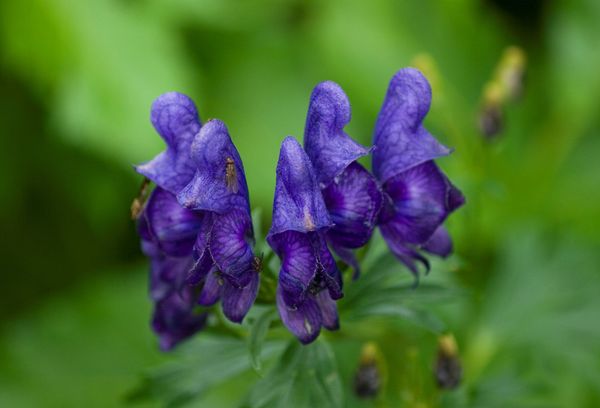
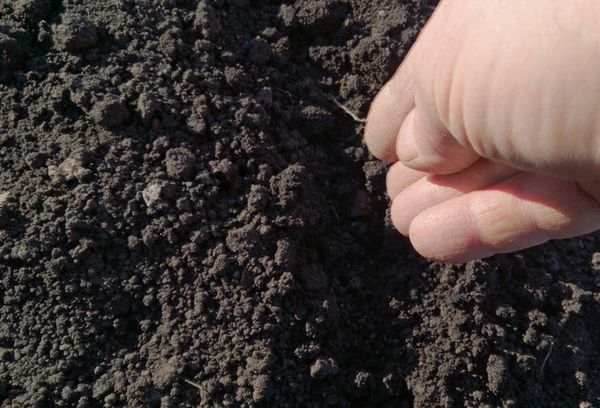

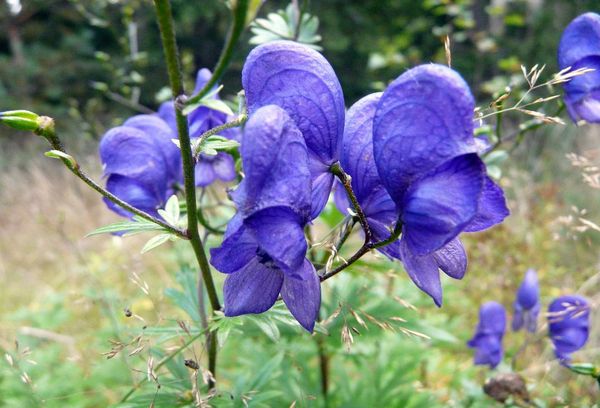

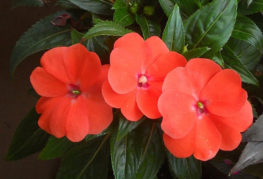

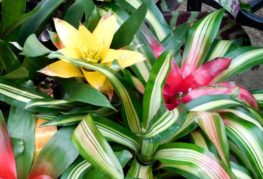
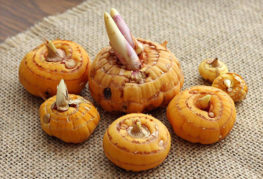
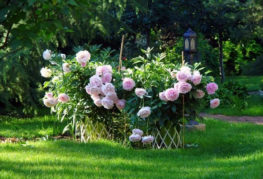
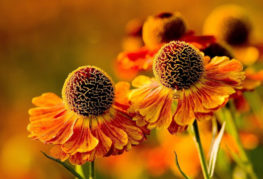
and will be published shortly.